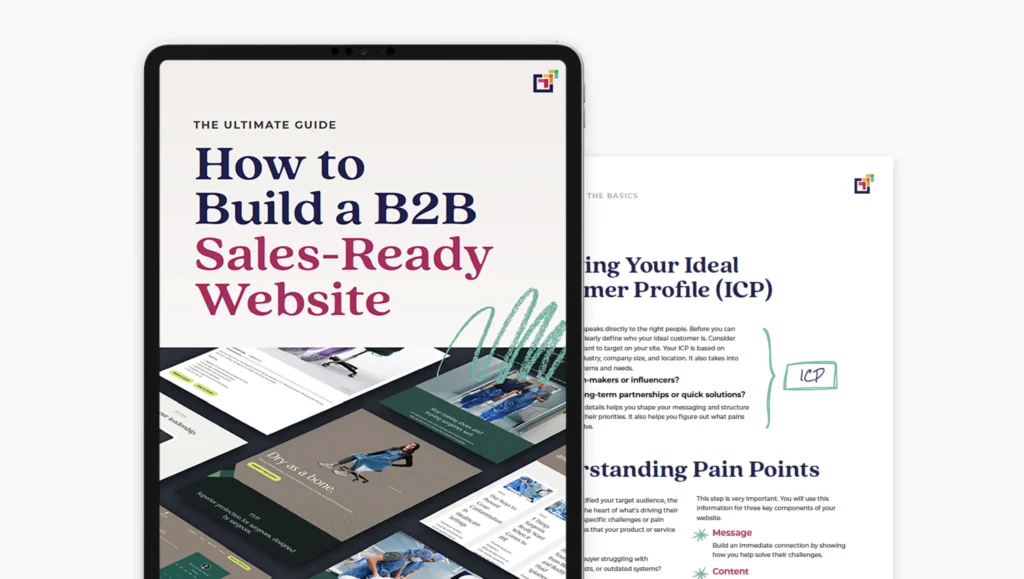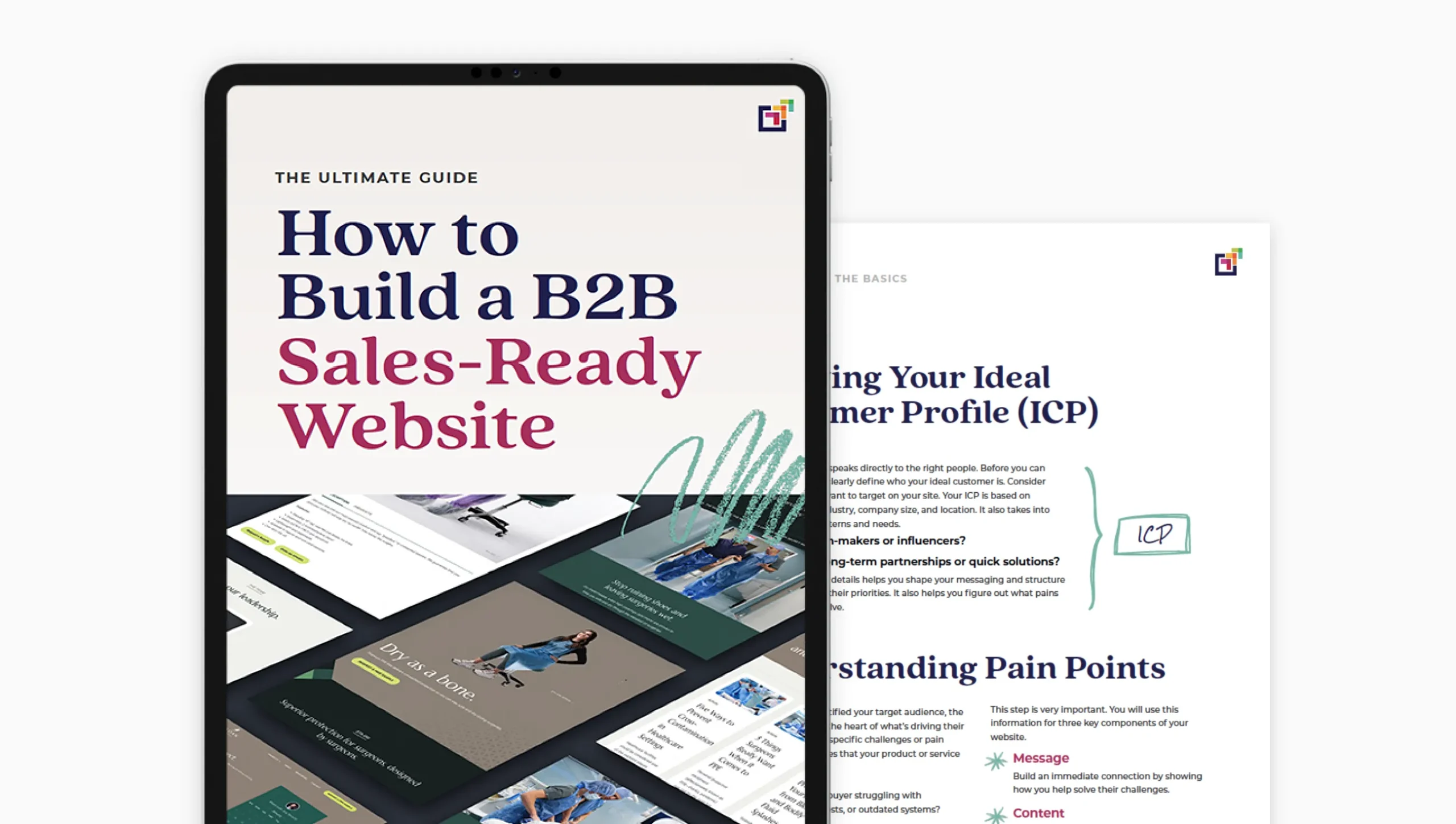Turn Your Website Into Your Top Sales Tool
Every small B2B business has one goal in common—growing revenue. Yet because most smaller companies don’t actually sell products or services on their website, they discount the role their website plays in the buying journey. Today, up to 90% of that buyer journey is done online, solo, before your prospect will ever reach out to a sales rep. This means if your website isn’t set up to properly attract and nurture leads at every stage of the B2B buyer journey, you are losing opportunities to online competitors.
What Is a Sales-Ready Website Audit?
Our B2B sales-ready website audit actually consists of 5 individual audits.
- Site speed audit & optimization
- SEO site health & optimization
- Security & vulnerability scan
- ADA compliance audit
- Sales funnel & conversion audit & optimization
The findings of these audits are compiled into a detailed report listing all of the steps you can take to enhance your site to support your sales process. This doesn’t always mean a complete teardown of your site. You can choose which tactics you wish to tackle first. We’ll recommend low-hanging fruit and items that need immediate attention. Below is a portion of one audit we did for a Medical Supply company. Upon updating their website, they experienced a 500% increase in website traffic alone.
Whether it’s improving load times or using persuasive copywriting techniques, we evaluate every aspect of your site. Let’s take a look at some proven tactics that will help you drive more traffic, more conversions, and ultimately, more revenue.
Clearly Communicating Value
Web vistors have incredibly short attention spans. If it’s not immediately clear what you do and how you can help them, you better believe buyers are going to hit the back button to go check out the next link in the search results.
Using consistent messaging throught your website is important, and it also has to be written to:
- Communicate value to your buyer
- Convey trust worthiness
- Speak to their challenges or pain points
- Be scannable and easy to digest
- Be conversational and not overly salsey
- Be free of confusing language or jargon
If your site fails to pass the test on any of these points, you risk missing out on sales opportunities.
Looking the Part
In the example above, Sloan Medical’s VP of Sales complained that, although they did business internationally, they didn’t look like a legitimate business. We see this frequently with smaller B2B companies. It’s a real challenge, especially when you are competing with large businesses.
High-quality design elements are essential for any website to catch the attention of B2B buyers. Human beings are naturally drawn to high-quality photography, imagery, and graphics. Incorporating consistent brand visuals into your website can help increase engagement with your audience and ultimately lead to more sales.
73% of companies used web design to eliminate their competitors.
When it comes to creating visual appeal for your website, there are a few key things to keep in mind. First and foremost is ensuring that the images you use align with your brand identity and messaging. This not only helps create a cohesive look for your site but also reinforces your brand image in the minds of potential customers.
Optimizing for Conversions
Strong calls to action are the backbone of a successful sales-optimized website. They have the power to make or break your conversion rate. A well-placed call to action can be the difference between a visitor bouncing off your site and converting into a lead.
When designing your calls to action, it’s important to consider what actions you want visitors to take on your site and what’s reasonable for the stage of the funnel they are in. Your website should be designed to support buyers at every stage of the funnel. It should also nurture your buyer toward the next step in the sales funnel, whether it’s finding the information they need, building trust with your brand, or finally getting them to book a sales call.
During our audit, we’ll review your site for conversion rate optimization best practices and provide recommendations for enhancements at each stage of the B2B buyer journey.
Building Trust
B2B buyers are looking for long-term partners they can trust, which is why it’s so important to ensure your website helps establish that trust. There are quite a few ways to do this online; we call this social proof.
92% of B2B buyers are more likely to purchase after reading a trusted review.
Social proof is the idea that people are more likely to buy a product or service once they’ve seen the success that others have experienced. This could take the form of:
- Customer testimonials
- Case studies
- Social media reviews
- Success statistics
- Prominent client logos
A blog can also be a valuable tool in developing trust and credibility with your readers. Not to mention, a well-executed blog strategy can help support your sales efforts in several other ways.
Standing Out Amongst Your Competition
90% of B2B buyers will research 2-7 websites buyer buying.
Every B2B sales-ready website needs key information to educate buyers that your company is the best choice. 90% of B2B buyers will research 2-7 websites before buying. As prospects narrow down their options, you have to ensure they can find the answers they need to avoid being eliminated from the consideration set. Your website needs to provide buyers with:
- A complete list of products and services
- Features and benefits
- Differentiators
- Pricing
- FAQs and objection handeling
Supporting Your Sales Team
A sales-ready website isn’t just about helping your buyers find everything they need without the help of a salesperson. It’s also about creating a tool that supports your sales team.
A sales-ready website should help support your sales team when they are off the clock. After all, it’s working 24/7. It should also encourage buyers to want to engage with your sales team. This is why a blog is so important. Articles written by your sales team showcase their expertise. By including headshots of your sales team, as well as their bios and social profiles, you help buyers get to know your team and feel more comfortable doing business with you.
Your B2B website should be generating leads for your sales team.
Your B2B website should be generating leads for your sales team. By including lead magnets in your content strategy and offering free resources like e-books or whitepapers, you not only provide helpful information to guide buyers in their journey but also capture leads for your sales team in exchange for that information.
Driving Traffic
While everything we’ve listed thus far plays an important role, it’s often what you can’t see that’s even more important in the success of your website. One key to growth is getting more qualified B2B buyers to your website. Many factors play into this, from the keywords you choose to your website load times. This is why we put your site through a 146-point checklist to identify the areas of improvement.
Get Your Sales-Ready Audit
If you’re worried your website isn’t sales-optimized, we’re here to help. Ask us about our special discount for new customers. We can show you what’s working and what isn’t and transform your site into a high performer.




